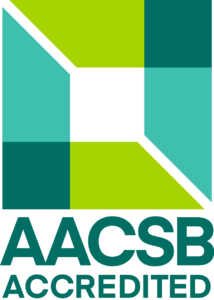Network technologies I
- Credits: 7
- Ending: Examination
- Range: 2P + 2C
- Semester: summer
- Year: 2
- Faculty of Economic Informatics
Teachers
Included in study programs
Teaching results
After completing the course, students will have:
Knowledge
A. To understand the principles of communication in computer networks.
B. To understand the principles of computer network classification and different network architectures.
C. To understand the principles of internetworking and interoperability between networks.
D. To understand the possibilities and trends in data transmission within modern computer networks.
E. To understand the fundamentals of addressing and routing in computer networks.
Skills
F. To work with Internet services and applications effectively and safely.
G. To design a website for a specific application area using appropriate tools and methods.
E. To apply addressing and routing concepts when solving network-related tasks.
Competentness
A. To apply communication and network architecture principles when analysing or designing network solutions.
C. To evaluate and integrate various internetworking mechanisms in practical scenarios.
D. To assess modern data transmission technologies and select suitable approaches for specific use cases.
G. To design and present a functional web solution aligned with the needs of a defined application area.
Indicative content
1. Data transmission.(nature of data, data interpretation, forms of data transmission, physical data transmission, modulation, types of modulation, AD/DA converter )
2. Classification of computer networks (classification in terms of size, topology, type of data transmission, transmission medium, method of access to resources, method of interconnection,technologies used etc.).
3. Computer network architectures (topologies of computer networks, relevant technological background, technical means used, methods of modelling the PS architecture).
4. Communication infrastructure (DialUp, ISDN, ATM, ADSL, SDSL, XDSL, etc.)
5. Data transmission options and trends (types of interconnection, circuits, packets, cells, messages, access methods.
6. Wifi networks (characteristics of IEEE 802.11, 802.11a,b,g, n, y, ac, ad, wifi AP, Bridge, repeater modes, wifi security, security protocols WPA, WPA2, AES, TKIP, WPS, wifi router configuration)
7. Optical technologies (optical fibre, optical signal transmission method, differences between mono and multimode transmission, multipexing, fibre splicing, input/output devices, connectors, media converters, optical circuit formation).
8. ISO-OSI reference model, Novel Netware, TCP/IP protocols, TCP/IP layer structure, TCP/IP active elements, repeater, bridge, halfbridge, backbone.
9. Computer network integration (internetworking, coexistence of IP, TCP, RIP, OSPF, BGP, UDP, ICMP, DHCP, etc., getway, router, switch...)
10. Internet: Internet addressing IP v4, IPv6, IP address, address space, , subnet mask, subnetting, clasfull, classles addressing, VLSM, CIDR notation,
11. Internet services (DNS, SMTP, POP3, IMAP, FTP, http, telnet, Whois, IRC, Computer network security SSL.
12. World Wide Web - principles, html, htttp, shttp, web servers Apache, NGINX, IIS, web browsers, server side and client side scripting languages.
13. Internet applications (web applications, web services, interactive websites, social networks google, facebook, youtube, etc.).
Support literature
1. Bonaventure, O. (2011). Computer networking: Principles, protocols and practice (Release 0.25). The Saylor Foundation.
2. Hunt, C. (1997). Konfigurace a správa sítí TCP/IP. Computer Press.
3. Kálay, F., & Peniak, P. (2003). Počítačové sítě a jejich aplikace. Grada.
4. Schmidt, P. (2017). Základy informačných sietí. AZ Print.
5. Sosinsky, B. (2009). Networking Bible. Wiley Publishing.
6. Sportack, M. A. (2004). Směrování v sítích IP. Computer Press.
7. Tanenbaum, A. S., & Wetherall, D. J. (2021). Computer networks (6th ed.). Pearson.
Syllabus
1. Data transmission Explanation of the nature of data, their interpretation, and forms of transmission. Physical data transmission, modulation principles and types of modulation. The role and function of AD/DA converters in digital and analog communication. 2. Classification of computer networks Classification of networks based on size, topology, transmission media, access methods and technologies used. Overview of LAN, MAN, WAN and other network categories. Comparison of properties and use cases of different network types. 3. Computer network architectures Overview of common network topologies and their technological background. Description of hardware components and tools used to build network architectures. Advantages and limitations of various architectural approaches. 4. Communication infrastructure Description of traditional and modern access technologies such as Dial-Up, ISDN, ATM, ADSL, SDSL and xDSL. Comparison of bandwidth, latency, reliability and typical use cases for each technology. 5. Data transmission possibilities and trends Distinction between circuit, packet, cell and message switching. Overview of access methods used in data communication technologies. Current trends in modern transmission systems. 6. Wi-Fi networks Characteristics of IEEE 802.11 standards (a/b/g/n/ac/ad/ay). Operation modes of Wi-Fi devices such as Access Point, Bridge and Repeater. Security protocols including WPA, WPA2, AES, TKIP and WPS, and configuration of Wi-Fi routers. 7. Optical technologies Fundamentals of optical fiber communication, including differences between single-mode and multi-mode transmission. Multiplexing techniques, fiber splicing, optical connectors and media converters. Designing and constructing optical loops. 8. ISO/OSI reference model and TCP/IP protocols Functions of the layers in the ISO/OSI and TCP/IP models. Description of active network devices such as repeaters, bridges, switches and backbone components. The role of protocols in network communication. 9. Network integration (internetworking) Coexistence and interoperability of protocols such as IP, TCP, RIP, OSPF, BGP, UDP, ICMP and DHCP. Functions of gateways, routers and switches. Mechanisms for interconnecting heterogeneous networks. 10. Internet and addressing IP addressing in IPv4 and IPv6, structure of address space and allocation methods. Subnet masks, subnetting, classful and classless addressing, VLSM and CIDR notation. Designing subnet structures for practical deployment. 11. Internet services Protocols such as DNS, SMTP, POP3, IMAP, FTP, HTTP, Telnet, WHOIS and IRC. Introduction to network security using SSL and related mechanisms. Importance of network services as part of the Internet infrastructure. 12. World Wide Web Principles of web operation, including HTTP, HTTPS and SHTTP protocols. Overview of web servers (Apache, NGINX, IIS), web browsers and their functions. Client-side and server-side scripting as a foundation for dynamic web applications. 13. Internet applications Overview of web applications, web services, and interactive websites. Description of major online platforms and social networks such as Google, Facebook, and YouTube. Contemporary trends in the development of Internet-based applications.
Requirements to complete the course
final exam - written form, 60% (passing the exam means obtaining a minimum of 51% of the exam grade). The exam consists of two parts: verification of theoretical knowledge (test with different types of questions). The theoretical part verifies the level of learning outcomes A,B,C,D,E
a term paper, 40 %, verifying the level of the learning outcomes F,G
Student workload
Total study load (in hours): 6 credits x 26 hours = 156 hours
Total student workload: 156 h
participation in lectures 26 h,
participation in seminars 26 h,
preparation for seminars 13 h,
elaboration of a semester project 65 h,
preparation for the exam 26 h)
Language whose command is required to complete the course
slovak
Date of approval: 04.03.2025
Date of the latest change: 06.11.2025

